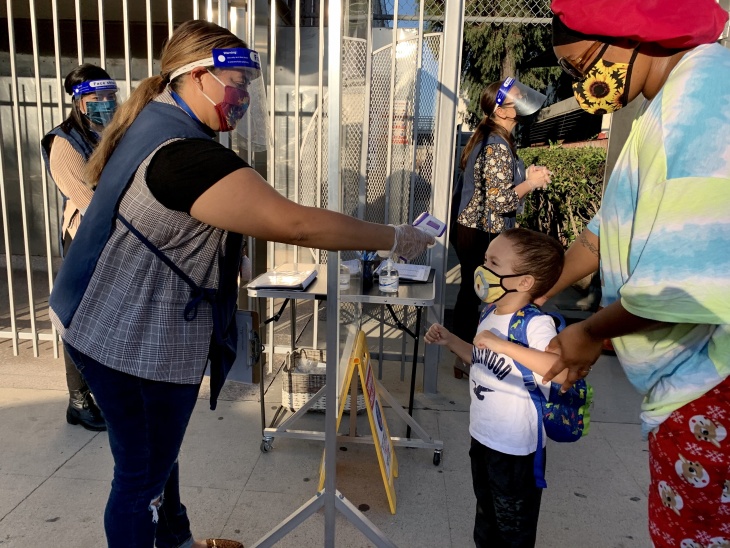
Our news is free on LAist. To make sure you get our coverage: Sign up for our daily coronavirus newsletter. To support our non-profit public service journalism: Donate Now.
Parents who've found a spot in child care might have a better shot at economically weathering the pandemic — but with early education programs largely closed and private providers struggling, finding a spot can be a challenge, particularly for low-income families.
Case in point: the Head Start and Early Head Start programs overseen by the Los Angeles County Office of Education. Although they've started to reopen in-person under stringent guidelines- small class sizes, daily health checks, and frequent toy-cleaning — they're still operating at greatly reduced capacity
That hinders both early learning and parents' ability to stay in the workforce.
"A big barrier to low-income families or families with low levels of education in entering the labor force is it's often hard to find jobs that pay enough to justify the expense of child care," said University of North Texas Sociology Professor William Scarborough.
Scarborough recently examined the relationship between poverty and Head Start during the Great Recession. He and his co-authors found that in states where there's more access to the program, fewer families fell into poverty. The research will soon be published in the peer-reviewed journal Family Relations.
"Investments in child care and family well-being are actually economic investments," Scarborough said.
'WHEN ARE YOU GOING TO OPEN YOUR CLASSROOM?'
Child care made all of the difference in parent Correta Proudie's economic outlook — and her little boy Mario's well-being.
Proudie was lucky enough to be able to enroll her son in a Para Los Niños early education program in Hollywood.
She started bringing Mario, who's now three-and-a-half years old — to Para Los Niños about a year ago. "This place, you can't get better," she said.
Mario can get speech therapy on-site. Proudie said he would come home every day and tell her what he played with and what he ate for lunch.
But then Para Los Niños closed for in-person services for about six months, and Proudie stayed home with her son. The child care center has since partially reopened under strict COVID-19 safety protocols, and now it's serving 20 kids under age 5 every day. Before the pandemic, there were 60 kids under its care each day.
Proudie was fortunate to snag a spot for her son.
"Now I'm able to look for work during the pandemic," Proudie said. "I just didn't feel comfortable leaving him with any one all day long. So it's made a tremendous difference in our lives."
In fact, she's already found a job at U-Haul.
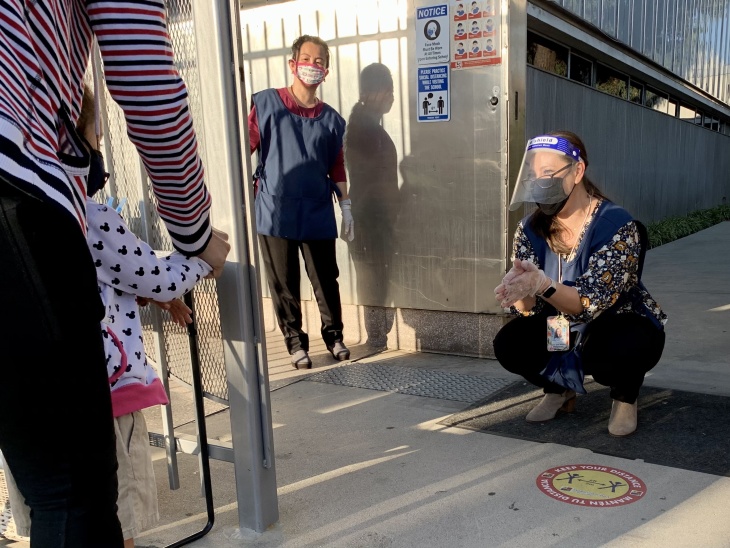
Other parents are eagerly awaiting a full reopening.
"We have calls every day, you know, 'When are you going to open your classroom? I'm waiting, please call me. Don't forget about me,'" said site supervisor Vanessa Quezada.
There are two main factors keeping Para Los Niños from fully reopening. L.A. County public health guidelines limit class sizes to 12 prevent the spread of COVID-19 and staffing.
"They want to come back. They want to teach, but they can't because they're also being parents at home, having to support their families at home," Quezada said. These teachers are running Para Los Niños's virtual classrooms.
Mom Gabrielle Burr has been able to work from home as a case manager for the homeless population. It hasn't been easy with four kids, two stepchildren and a baby at home, but her 4-year-old son Atticus returning to Para Los Niños has helped.
"I'm able to be more productive at work, and I'm able to be more there when my kids are there and play with them," Burr said.
These are concrete examples of what we've heard for months - "Child care is foundational to getting people back to work."
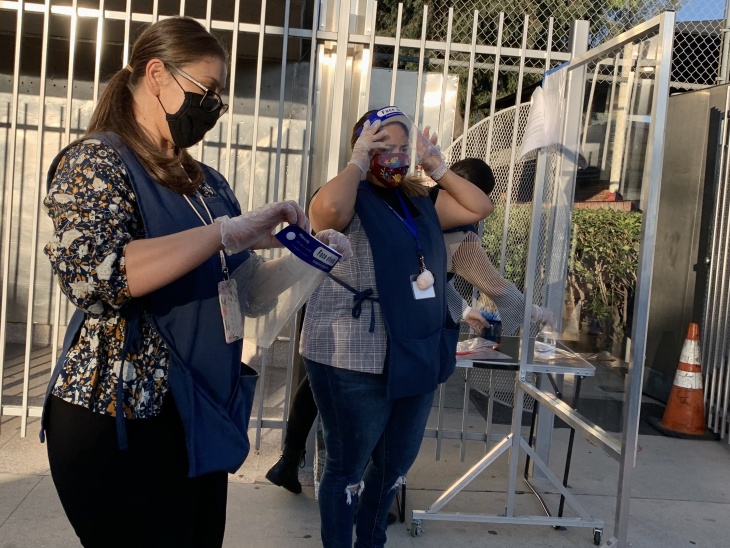
Those are the words of Gov. Gavin Newsom at a briefing in April.
There are several options for low-income families in California including state preschool, child care subsidies through CalWORKs and federally funded Head Start and Early Head Start programs that are run by local organizations like Para Los Niños.
(If you need help finding one of these programs this website can help)
The Los Angeles County Office of Education oversees the largest Head Start and Early Head Start program in the area. Typically, about 11,000 kids in from low-income families attend programs funded by a blend of state dollars and federal money for
The county reports enrollment is down about 30% with 5,168 kids in in distance and virtual learning programs, 1,297 in an existing home-based program and 1,141 in center-based classrooms.
"Most people see Head Start as a child care, but we're not child care," said Keesha Woods, who leads the programs for the Los Angeles County Office of Education. "We are an early learning, brain development program."
Despite that distinction, parents rely on these programs to watch over their kids.
In addition to the challenges Para Los Niños faces, some early education classrooms haven't opened in-person because they're on closed public school district campuses.
The county recently rolled out a pair of RVs to recruit new families and, post-Covid-19, provide mobile child development services.
"Our biggest part now is to get families to understand that we are still here to support them," Woods said.
FUNDING CHILD CARE AS A PUBLIC GOOD
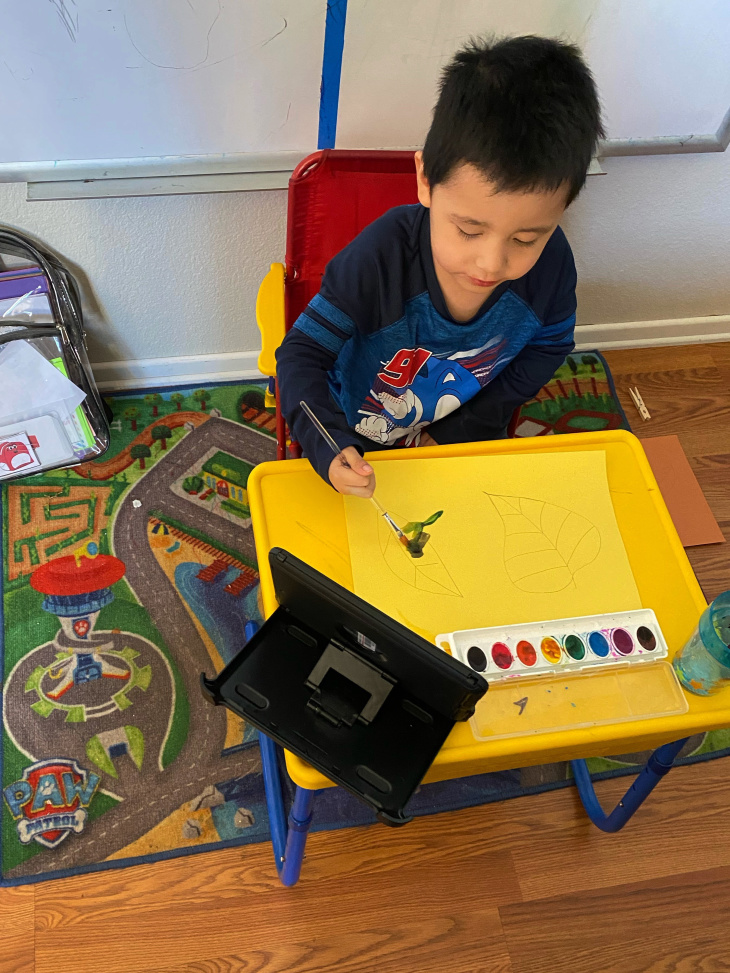
Early childhood advocates say investments in the field are long overdue.
"In the long run, we really do need a system that looks at child care as the public good that it is, with the funding structure that doesn't place the burden of paying for child care squarely on the shoulders of providers, parents - particularly parents earning low incomes- and child care workers who are disproportionately women of color," said policy analyst Alycia Hardy. She focuses on child care and early education at The Center for Law and Social Policy.
Early educators earn an average of $14.65 an hour according to a 2017 L.A. County report. Providers must knit together multiple streams of funding to make ends meet.
The CARES Act, passed in March, included $750 million for Head Start programs. Woods estimated the L.A. County Office of Education overseen programs received an additional $10 million during the pandemic.
"The challenge with those one time only dollars, it doesn't increase your operational budget," Woods said, and paying for increased cleaning and technology for families will make the programs more expensive to operate long term.
The CARES Act also included $3.5 billion for other child programs. California's share was $350,313,504, which is quickly being spent on stipends for providers, subsidized child care for essential workers and to reimburse the state for money it's already spent during the pandemic.
It's unclear when new funding is coming or how much there will be. The House of Representatives passed the Child Care is Essential Act in July, which includes $50 billion to stabilize early care and education programs nationally. The Senate's HEALS Act includes $15 billion for child care.
"We know that the vast majority of young children get care outside of the home. And yet, we don't fund that reality in this country," said Myra Jones-Taylor, chief policy officer at nonprofit Zero to Three.
In 2018-19, 30% of eligible California kids accessed Head Start and 9% attended Early Head Start, according to the National Head Start Association.
Jones-Taylor predicted the number of children eligible for these programs will increase as more people fall below the poverty line.
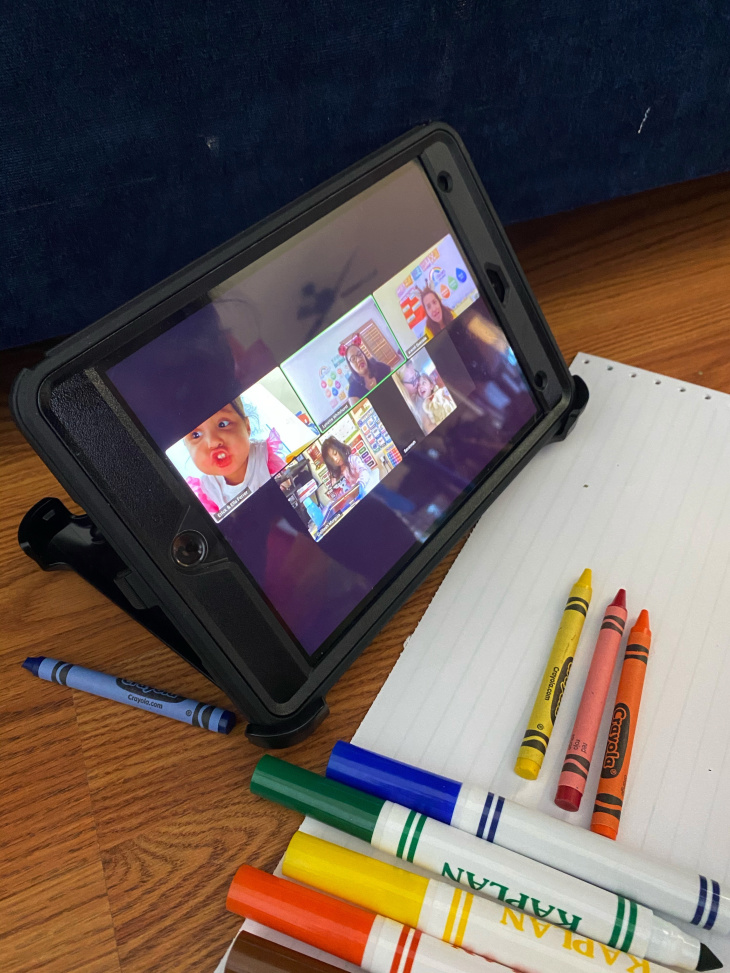
"You add that to the fact that we are now seeing child care programs across the country closing. And so there will be even more demand for high quality settings for young children and less of a supply," Jones-Taylor said.
'I WOULDN'T KNOW WHO ELSE TO TAKE CARE OF MY CHILDREN'
Virtual early education programs are working for some families.
Ericka Rojas's daughter Ella is 2 years old and is learning her shapes and colors online with her Early Head Start teacher and mom's help.
"Now that I'm home, I'm able to accomplish those milestones with them," Rojas said.
Although it can be a bit chaotic.
"She doesn't sit in one place," Rojas said. "So I'm chasing after her like, 'Hey come back. We're still in class.'"
The teachers from her daughter's program, which is run by the Child Care Resource Center, call to check in regularly. Rojas is working from home as an instructional assistant in the Palmdale School District. She said if child care isn't open when she has to go back in-person, she's not sure what she'll do.
"I was thinking of just maybe taking some time off, even though that's going to mean not having any income, but I wouldn't know who else to take care of my children," Rojas said.
"care" - Google News
November 07, 2020 at 02:31AM
https://ift.tt/3eKud2h
Child Care Can Help LA Families Financially Survive The Pandemic, But It's Still Unavailable For Many - LAist
"care" - Google News
https://ift.tt/2N6arSB
Shoes Man Tutorial
Pos News Update
Meme Update
Korean Entertainment News
Japan News Update
Bagikan Berita Ini














0 Response to "Child Care Can Help LA Families Financially Survive The Pandemic, But It's Still Unavailable For Many - LAist"
Post a Comment